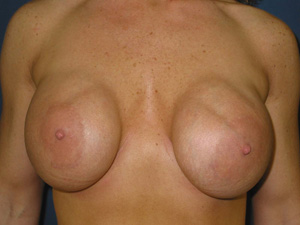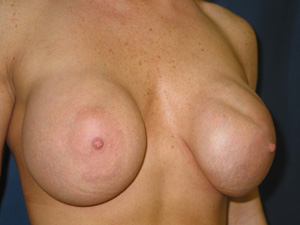There are many decisions to be made when contemplating breast augmentation surgery such as implant size, shape, projection type, placement behind or in front of the muscle and saline versus silicone. Another factor to consider is the surface characteristics of the implant – smooth or textured. The first generation of breast implants that were used beginning in the 1960’s had a smooth outer surface. Over time, a significant number of these women developed firmness around the implants called capsular contracture. In the 1970’s, it was discovered that placing a thin layer of textured polyurethane foam around the implants resulted in a much lower rate of this contracture developing. The aesthetic results were superior both in feel and appearance to those that did not have this outer layer. These polyurethane implants remained quite popular until they were voluntarily removed from the market in 1992 due to theoretical concerns of long-term safety of the polyurethane itself.
Implant manufacturers sought to simulate these results by incorporating the texturing within the silicone outer shell of the implants without the need for polyurethane. These began appearing around 1986 from a variety of manufacturers and are still being offered today along with the smooth surfaced ones.
So, which is the better choice? The answer is not exactly straightforward. It may depend on several factors as well as on physician preference. Research data on textured versus smooth implants at times has been inconclusive with regard to the development of capsular contracture. For implants placed above the muscle (submammary), there may be a lower rate of firmness developing when the textured surfaced ones are used. However, textured saline implants in this location are associated with a high rate of rippling and irregularities of the skin contour, severely compromising the aesthetic result as compared to the smooth surfaced ones. This can also create discomfort in the breast where the edges of the implant are poking into the skin. The implant may also have a shorter life span.
Research results for the implants placed behind the muscle (submuscular) are less clear. There may be slight differences in the capsular contracture rates and durability between the textured and smooth implants, whether they are silicone or saline.
So, what do I recommend from my years of experience? For several reasons, rarely would I place an implant above the muscle. If I did, it surely would not be a textured saline one! My choice for saline implants behind the muscle is also smooth because they clearly provide a better aesthetic outcome.
Both smooth and textured silicone implants placed behind the muscle can yield great results. I base my recommendation largely but not solely on the dimensions of the implant that I am looking for. The textured and smooth implant configurations as designed by the manufacturer of preference, Allergan Corporation, are slightly different throughout the range of sizes with the latter tending to be slightly more projecting and less wide. If someone had a history of capsular contracture, I would more likely consider a textured surfaced implant in that situation.
I find that implant surface type is a non-issue with my patients. They will defer to my recommendations here. After all, they have much more important decisions to make. Like implant size…!
Steven H. Turkeltaub, M.D. P.C.
Scottsdale and Phoenix, Arizona


